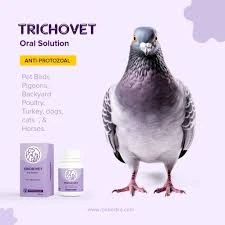
أكتوبر . 18, 2024 14:02 Back to list
Tylosin Use in Poultry Production and Its Manufacturers
Tylosin for Poultry A Comprehensive Overview for Manufacturers
Tylosin is an antibiotic that has gained significant attention in the poultry industry due to its effectiveness in controlling various bacterial infections. Manufactured primarily for use in chickens and turkeys, Tylosin plays a pivotal role in improving animal health, enhancing feed efficiency, and ultimately boosting productivity. This article provides an overview of Tylosin, its benefits, its applications in poultry, and the importance of responsible manufacturing practices.
Understanding Tylosin
Tylosin is a macrolide antibiotic derived from the bacterium *Streptomyces fradiae*. It is commonly used in veterinary medicine and has been approved for use in food-producing animals. The primary indication for Tylosin in poultry is the prevention and treatment of mycoplasmosis, a disease caused by the bacterium *Mycoplasma gallisepticum*. This infection can lead to severe respiratory issues in birds, resulting in decreased growth rates, poor feed conversion, and economic losses for farmers.
Efficacy and Benefits in Poultry Production
The application of Tylosin in poultry has demonstrated remarkable benefits. It helps to control the spread of infections, leading to healthier flocks and reduced mortality rates. By enhancing the overall health of the birds, producers observe improved feed conversion ratios, meaning that birds utilize feed more efficiently to gain weight. This results in lower production costs and higher profitability.
tylosin for poultry manufacturer

Additionally, Tylosin helps to mitigate the risk of secondary infections, which can arise from the stress of illness or suboptimal living conditions. The antibiotic promotes faster recovery and minimizes the need for more potent drugs, which can lead to antibiotic resistance if overused.
Manufacturing Considerations
For manufacturers of Tylosin and related veterinary pharmaceuticals, adhering to strict regulations and quality standards is imperative. The production process must comply with Good Manufacturing Practices (GMP) to ensure the safety and efficacy of the antibiotic. This involves rigorous quality control measures, including thorough testing of raw materials and final products.
Furthermore, as concerns about antibiotic usage in livestock continue to grow, manufacturers must focus on responsible marketing and education. Providing accurate information on dosages, potential side effects, and the importance of proper usage can help mitigate the risks of antibiotic resistance.
Conclusion
Tylosin remains a valuable tool in poultry production, enhancing animal health and improving productivity. Manufacturers play a critical role in ensuring the quality and safety of this antibiotic, while also promoting its responsible use in the field. As the industry evolves, ongoing research and development will be essential to maximizing the benefits of Tylosin while addressing the challenges of antibiotic resistance in agriculture.
-
Cyanosis of the Skin Solutions Trusted Manufacturers & Suppliers
NewsMay.20,2025
-
Porcine Toxoplasmosis Kits Reliable Suppliers & Manufacturers
NewsMay.20,2025
-
Dermatitis Relief Creams & Ointments Trusted Manufacturer & Supplier
NewsMay.20,2025
-
Pleurisy Factory High-Quality Manufacturer & Supplier Solutions
NewsMay.19,2025
-
Premium Dexamethasone for Equine & Climbing Trusted Suppliers & Factory
NewsMay.19,2025
-
Sulfamono Methoxine Supplier High-Quality Veterinary Antibiotic
NewsMay.18,2025




